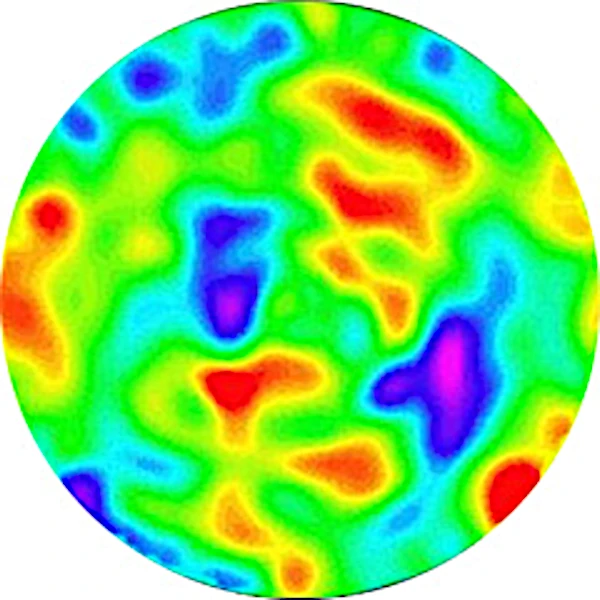
The observable universe, as revealed by the cosmic microwave background (CMB), exhibits astonishing thermal homogeneity on a large scale. The average temperature of this fossil radiation is \(\sim 2.725\ \text{K}\), with fluctuations on the order of \(10^{-5}\). Yet, some regions of the sky are so distant that they have never been able to causally interact since the Big Bang, as light has not had time to travel between them. How then can we explain such a uniform temperature?
In a classical Big Bang model without inflation, regions separated by more than an angle of \(\sim 1\)° on the celestial sphere could not have exchanged light or information since the beginning of the universe. The causal horizon defines this contact limit: it is the maximum distance traveled by light since the Big Bang. However, the CMB seems to indicate isotropy well beyond this horizon. This contradiction is called the horizon problem.
To resolve this paradox, the theory of cosmic inflation, introduced in the 1980s by Alan Guth, proposes a very rapid exponential expansion of space-time around \(10^{-36}\) s after the Big Bang. For an extremely brief period, the volume of the universe would have increased by a factor greater than \(10^{26}\). This phase would have brought distant regions into causal contact, explaining the observed uniformity.
Inflation not only resolves the horizon problem. It also provides homogeneous and nearly flat initial conditions, explaining the low curvature of the universe (\(\Omega \approx 1\)) and the large-scale structure. Furthermore, it predicts a spectrum of quantum fluctuations amplified during this phase, which are the origin of the CMB anisotropies observed by WMAP and Planck.
The inflationary phase could be linked to a phase transition in a scalar field (the inflaton field), whose potential would be governed by high-energy physics (\(E \gg 10^{15}\ \text{GeV}\)). This field could represent a manifestation of a unified theory (GUT), connecting the fundamental interactions at the very beginning of the universe.
The horizon problem has catalyzed the development of the inflationary paradigm, widely accepted today. However, the very origin of inflation, the nature of the inflaton field, and the exit from this phase remain uncertain. Understanding this primitive epoch is therefore essential to connect cosmology and fundamental physics.